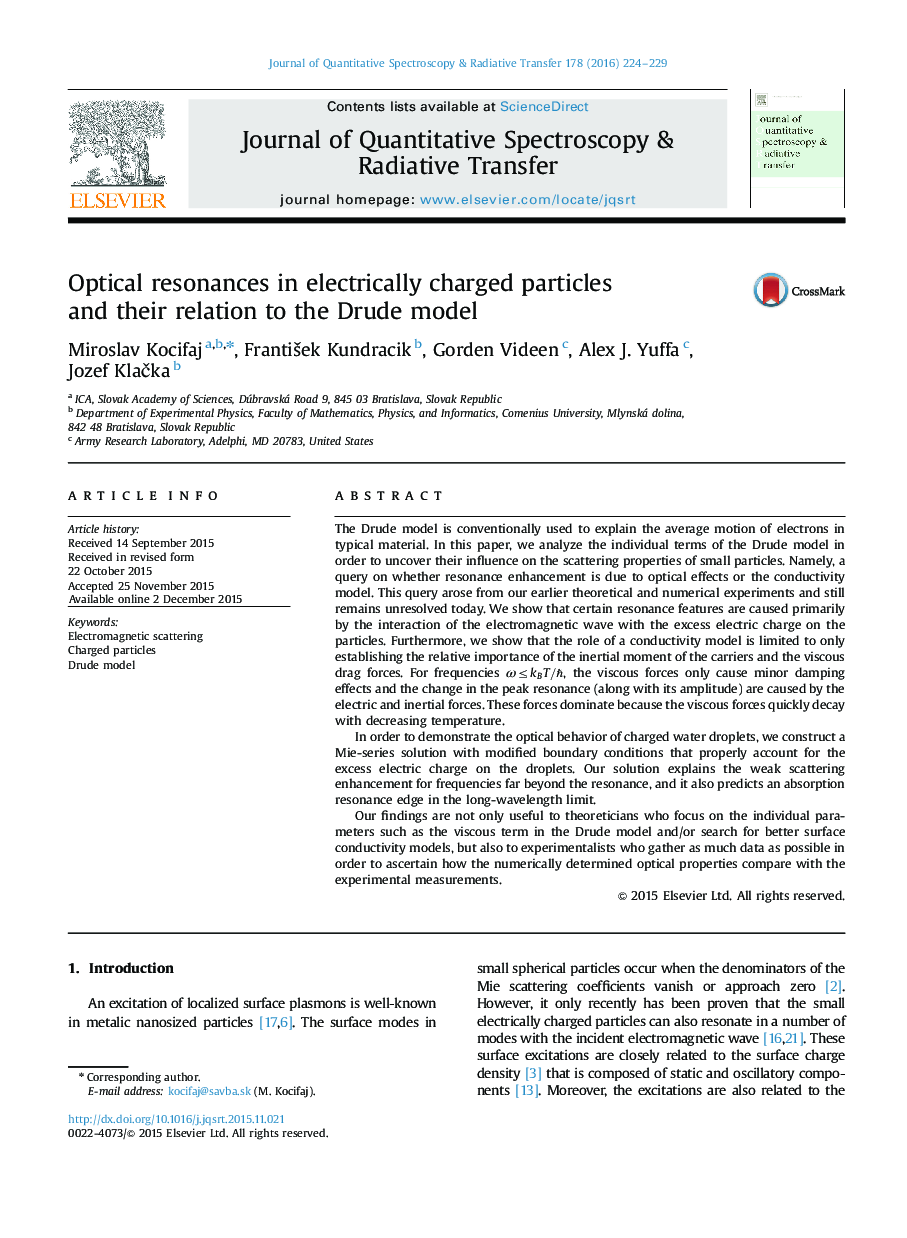| Article ID | Journal | Published Year | Pages | File Type |
|---|---|---|---|---|
| 5427591 | Journal of Quantitative Spectroscopy and Radiative Transfer | 2016 | 6 Pages |
â¢The Drude model role in optical resonances of charged particles is investigated.â¢Resonance enhancement at certain wavelengths is shown to be due to optical effects.â¢The maximum resonant amplification occurs under low temperature conditions.â¢Conductivity model shows no extrema at the resonance wavelengths.â¢Weak scattering enhancement for frequencies far-beyond the resonance is explained.
The Drude model is conventionally used to explain the average motion of electrons in typical material. In this paper, we analyze the individual terms of the Drude model in order to uncover their influence on the scattering properties of small particles. Namely, a query on whether resonance enhancement is due to optical effects or the conductivity model. This query arose from our earlier theoretical and numerical experiments and still remains unresolved today. We show that certain resonance features are caused primarily by the interaction of the electromagnetic wave with the excess electric charge on the particles. Furthermore, we show that the role of a conductivity model is limited to only establishing the relative importance of the inertial moment of the carriers and the viscous drag forces. For frequencies Ïâ¤kBT/â, the viscous forces only cause minor damping effects and the change in the peak resonance (along with its amplitude) are caused by the electric and inertial forces. These forces dominate because the viscous forces quickly decay with decreasing temperature.In order to demonstrate the optical behavior of charged water droplets, we construct a Mie-series solution with modified boundary conditions that properly account for the excess electric charge on the droplets. Our solution explains the weak scattering enhancement for frequencies far beyond the resonance, and it also predicts an absorption resonance edge in the long-wavelength limit.Our findings are not only useful to theoreticians who focus on the individual parameters such as the viscous term in the Drude model and/or search for better surface conductivity models, but also to experimentalists who gather as much data as possible in order to ascertain how the numerically determined optical properties compare with the experimental measurements.
